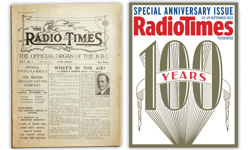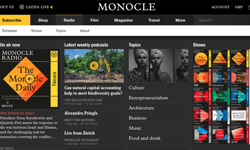For years, magazine companies got by without them. Yet in the past eighteen months, most media players you care to mention – magazines publishers included – have added the new role of Chief Technology Officer to their senior management line-up and, according to Dennis Publishing CTO Paul Lomax, this hasn’t come a day too soon.
Content may still be king, he says, but making the most of it depends on effectively enabling collaboration and optimising workflow. And though Dennis has transformed its business from traditional print publisher to award-winning, truly multi-platform player – in 2014 it won both the Association of Online Publishers’ and Professional Publishers Association’s Digital Publisher of the Year awards – there is still much to do.
Though known as CTO since joining Dennis six years ago, Lomax’s role changed around eighteen months ago with a shift in emphasis away from building websites and apps to a company-wide focus on customer facing technologies and internal IT infrastructure and strategy. The shift coincided with the rise of ‘shadow IT’ as tech investment has grown increasingly democratised with spending power handed to more people in other departments – notably marketing and PR.
“I still avoid trying to do anything with email and wi-fi and printers – there’s no glory in that!” he laughs. “But there is now so much cross-over in terms of what we do on the web and how we work internally – not just in editorial but also sales and marketing, with increased collaboration around things like Salesforce, database and data warehousing – and that’s the shift.”
In recognition of this, Dennis has made a number of fundamental changes over the past twelve to eighteen months.
Onto the cloud
For a start, though it still has a dedicated IT department with three people on site, central IT support is now provided by an outside provider. Hand in hand with this development, it has worked to move a number of its legacy systems onto the cloud. Both were about efficiency and maximising use of physical space.
“Build versus buy versus rent is one of the most important technology decisions now facing any company – and lots of publishers did build a bit too much stuff in the past, I think,” Lomax observes.
"Many people are keen to build things. And it is tempting – if a software vendor tells you ‘here’s some software and it will cost £30k a year and do 90% of what you need’ – to think that, even if it costs £100k over a three-year period to build, that’s OK because you will be building that extra 10% you’re missing."
But nine times out of ten, people don’t need that extra 10%, he points out. Meanwhile, many fail to realise the value of all the off-the-shelf stuff they don’t think is really necessary.
A key advantage of moving to cloud computing is the opportunity to integrate different software without having to use technical specialists as a system in the cloud already talks to other cloud systems providing better opportunities for workflow. And with products such as IFTT (IfThisThenThat) and Zapier, different web tools can be made to talk to each other without the involvement of a developer.
“You can build integrations yourself, but that kind of defeats the point I think – unless what you need to build is something genuinely nothing else does,” Lomax adds. “For example, we recently built a tool that brings data from Salesforce analytics and DoubleClick together in a dashboard. By building it on top of existing technology, one person was able to look after it rather than it becoming a major project.”
Introducing slack
Other important changes introduced in recent months include the introduction – and now, company-wide roll-out of – real-time messaging and archiving system Slack which is being used by both Dennis staff and external partners to enable more efficient and effective communications and collaboration.
“Slack is like an internal Facebook with instant messaging but what’s interesting to us is how you can plug it into lots of different systems. So we have one channel where when anyone closes an ad sale, it says that deal’s been closed. It allows information to radiate without you explicitly having to go and tell people as you would using email,” Lomax says.
Often, people forget to pass on information - or cc everyone who needs to know. With Slack, anyone who wants that information has chosen to receive it so it puts the onus on them. And this, in turn, is having a positive impact at Dennis on innovation. Slack’s tagline is ‘be less busy’ and the aim is to free up spare time to experiment and change.
“Some media businesses are getting to the point where they have no slack. But you need to make sure you are not too efficient,” he believes. “For example, you need ability to second people onto new launches – tapping in to your existing network rather than simply going out and hiring a brand new team.”
New structures
The opportunities and efficiencies enabled by new technology are also leading Dennis to create new structures within the business. For example, the company recently centralised its technology reviews team.
“Rather than having one reviews person per magazine and website, each getting their own individual latest iPhone, a centralised team means a more rigorous process which is also a bit more standardised while meeting brand-specific needs,” Lomax explains. “So they can build a great rapport with PRs, shoot products in a consistent way but take into account different product brand requirements so be more efficient.”
Though centralised, however, the team does not have to sit together in one place. Instead, photos and copy are dropped from anywhere into Google Drive which then sends a message via Slack to tell subs copy is in and ready for subbing. With reviews, copy tends to be subbed pre-publication online but with news, copy often goes live first. Subs then edit copy down and prepare it for multiple usage.
“The workflow means everything is more streamlined,” says Lomax. “But it also enables a more mobile workforce unplugged from desks and able to file copy wherever they are.” And there are benefits for sales teams, too. Having the CRM on Salesforce as an app on their phone so they can be in a meeting and look up a client’s history without having to phone the office gives the sale person “an enormous amount of power”.
Organisational structures at Dennis are also changing in other ways.
While a few years back, people sat in groups, brand by brand, increasingly, physical location is being re-organised by function. And this means in some cases, locating one magazine next to another magazine team with web teams close to other web teams rather than having cross-platform huddles located near to each brand’s publisher.
“The cross-platform debate is an interesting one,” Lomax admits. “A few years back, many magazines began talking about being digital first but when you probed, they’d say ‘apart from this story which we held back for print’. But as the power of content marketing has become more apparent, they’ve understood how branded content can promote your magazine.”
A case in point, he says, is an Auto Express interview with Elon Musk of Tesla that was published online first last year, spread virally and boosted magazine sales.
Hand in hand with a growing appreciation of how digital distribution can drive physical sales, however, is a shift in attitude at Dennis towards staffing and skills. “In cross-platform publishing, certain things should be done in a media neutral way – so if you are writing a review, do it in the way that works best irrespective of platform,” Lomax continues.
But when it comes to editing, it’s a different story.
“Editing is a specialism so you need specialists, and while there are some who can edit in print and digitally, the greater challenge is the production cycle,” he explains.
“Increasingly, we have online people here who don’t also do print for titles like The Week that are in print and online because what we would find is website output dropping once a month – or once a week for a weekly – when everyone was busy helping out during the final hours or days on the magazine’s latest issue.”
Embedding innovation
Innovation, which has always been high on Dennis’ agenda, has become a renewed focus, too, since the death of company founder Felix Dennis in 2014. With the shift in ownership to the Heart of England Forest Charity – a charity founded by Felix Dennis with a one hundred year business plan – a new senior management team for the publisher was put in place to encourage a longer term business focus and regularly review company strategy.
With a focus on how to launch new brands, maximise existing ones and identify the next big opportunities, the team has adopted the 70:20:10 philosophy championed by Google. This comes down to allocating 70% of your time to working on existing platforms and technology, 20% on diversifying and improving them, and 10% on diversification that is totally unconnected and or random.
“Many publishers do the 20% bit launching new verticals or new products into existing verticals but it is rare for a publisher to do the equivalent of Google developing self-driving cars,” Lomax explains, pointing to Dennis’ seven new launches over the past year which include tech website Alphr, men’s multi-platform health and fitness title Coach and, for children, The Week Junior.
“In late 2014, Dennis bought (online car retailer) Buyacar so we now sell cars on the internet – not as an affiliate, but as the merchant of record: that’s us doing the 20% bit. Perhaps in the future one of our 10% things will be to do ecommerce in a vertical we don’t already have. Or it might be something entirely different.”
It is an exciting time, he adds, and one that Dennis is well-positioned to further exploit over the months ahead.












